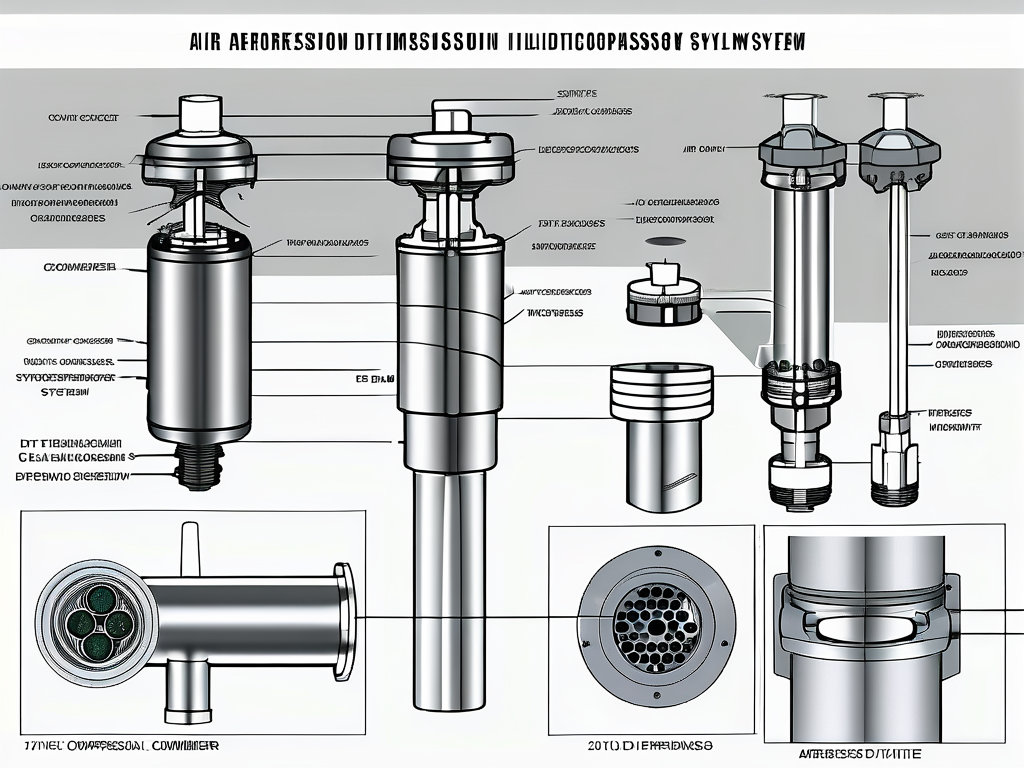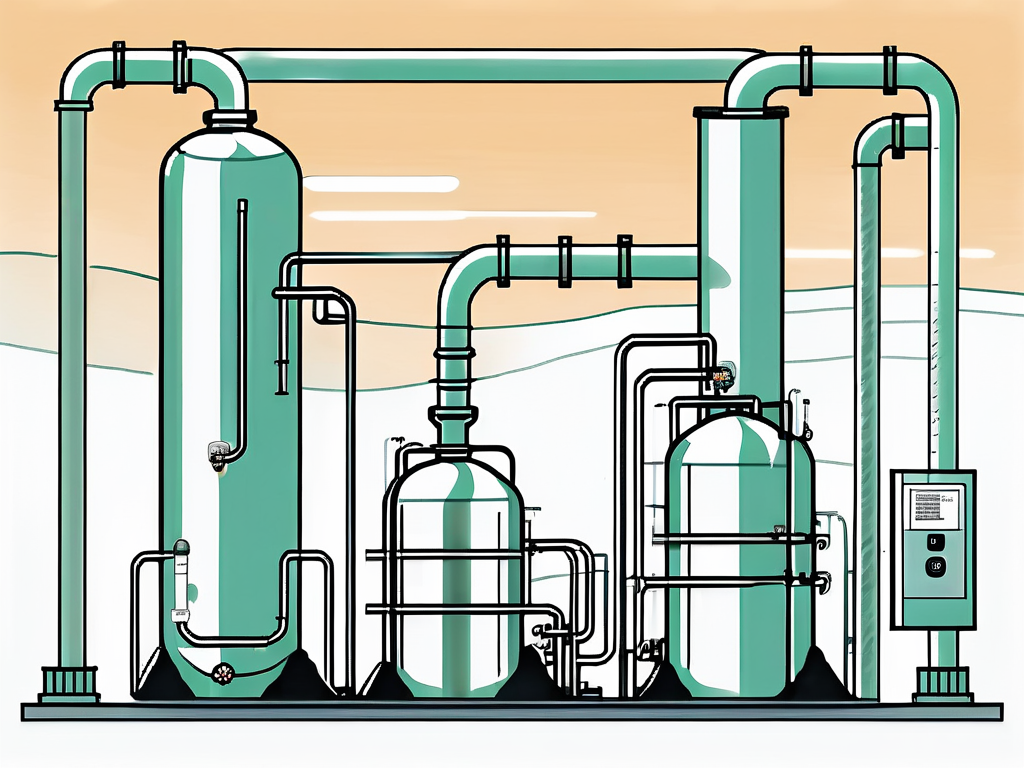
Jet Aeration: Wastewater Treatment Explained
Jet aeration is a critical component of the wastewater treatment process, responsible for the introduction of oxygen into wastewater to facilitate the biological oxidation of pollutants. This process is essential for the breakdown of organic matter and the removal of harmful substances, ensuring the treated water is safe for release back into the environment.
Understanding the intricacies of jet aeration can be complex, given the technical nature of the process and the range of factors that influence its effectiveness. This glossary article aims to provide a comprehensive overview of jet aeration in the context of wastewater treatment, exploring the underlying principles, key components, operational considerations, and more.
Principles of Jet Aeration
The principle of jet aeration is rooted in the fundamental need for oxygen in the biological treatment of wastewater. Microorganisms present in the wastewater consume organic matter, a process that requires oxygen. By introducing oxygen into the wastewater, jet aeration systems facilitate this biological activity, promoting the breakdown of pollutants.
Jet aeration achieves this by using a jet aerator, a device that draws in air and mixes it with the wastewater. The resulting mixture is then discharged into the treatment tank, where the oxygen is consumed by the microorganisms. The process is continuous, ensuring a constant supply of oxygen for the biological treatment process.
Role of Oxygen in Biological Treatment
Oxygen plays a critical role in the biological treatment of wastewater. It is used by aerobic bacteria, a type of microorganism that consumes organic matter in the presence of oxygen. These bacteria break down the organic matter into simpler substances, effectively removing pollutants from the wastewater.
Without sufficient oxygen, the aerobic bacteria cannot function effectively, leading to a decrease in the efficiency of the treatment process. This makes the role of jet aeration systems crucial in maintaining optimal conditions for the biological treatment of wastewater.
Jet Aerator Functionality
The jet aerator is the heart of the jet aeration system. It is designed to draw in air and mix it with the wastewater, creating a mixture that is rich in oxygen. This mixture is then discharged into the treatment tank, providing the necessary oxygen for the biological treatment process.
The functionality of the jet aerator is influenced by several factors, including the design of the device, the volume of air it can draw in, and the efficiency of the mixing process. These factors determine the amount of oxygen that can be introduced into the wastewater, influencing the effectiveness of the biological treatment process.
Components of a Jet Aeration System
A jet aeration system is composed of several key components, each playing a vital role in the overall process. These components include the jet aerator, the air supply system, the mixing system, and the control system.

The jet aerator is the primary component, responsible for drawing in air and mixing it with the wastewater. The air supply system provides the necessary air for the process, while the mixing system ensures the air is thoroughly mixed with the wastewater. The control system regulates the operation of the system, maintaining optimal conditions for the biological treatment process.
Jet Aerator
The jet aerator is a device that draws in air and mixes it with the wastewater. It is typically designed with a venturi tube, a type of tube that narrows in the middle, creating a pressure differential that draws in air. The air is then mixed with the wastewater, creating a mixture that is rich in oxygen.
The design and functionality of the jet aerator are critical to the effectiveness of the jet aeration system. A well-designed jet aerator can draw in a large volume of air, ensuring a high level of oxygenation in the wastewater. This contributes to the efficiency of the biological treatment process.
Air Supply System
The air supply system provides the necessary air for the jet aeration process. It typically includes an air compressor, which compresses the air and delivers it to the jet aerator. The air supply system also includes filters to remove any contaminants from the air, ensuring the quality of the air used in the process.
The efficiency of the air supply system is crucial to the operation of the jet aeration system. A well-maintained air supply system can deliver a consistent supply of air, ensuring the jet aerator can function effectively. This contributes to the overall efficiency of the jet aeration process.
Operational Considerations for Jet Aeration Systems
Operating a jet aeration system requires careful consideration of several factors. These include the oxygen demand of the wastewater, the design of the jet aeration system, and the operational parameters of the system.
The oxygen demand of the wastewater is a critical factor, as it determines the amount of air that needs to be introduced into the wastewater. The design of the jet aeration system influences its capacity to meet this demand, while the operational parameters of the system, such as the air pressure and flow rate, affect the efficiency of the oxygenation process.
Oxygen Demand of Wastewater
The oxygen demand of the wastewater is a measure of the amount of oxygen required for the biological treatment process. It is influenced by the concentration of organic matter in the wastewater, as well as the type of microorganisms present. High concentrations of organic matter increase the oxygen demand, requiring a higher volume of air to be introduced into the wastewater.
Understanding the oxygen demand of the wastewater is crucial for the effective operation of a jet aeration system. It allows for the adjustment of the system's operational parameters, ensuring the system can meet the oxygen demand and maintain optimal conditions for the biological treatment process.
Design Considerations for Jet Aeration Systems
The design of a jet aeration system influences its capacity to meet the oxygen demand of the wastewater. Key design considerations include the capacity of the jet aerator, the efficiency of the air supply system, and the effectiveness of the mixing system.
A well-designed jet aeration system can efficiently introduce a high volume of air into the wastewater, meeting the oxygen demand and facilitating the biological treatment process. Conversely, a poorly designed system may struggle to meet the oxygen demand, leading to a decrease in the efficiency of the treatment process.
Advantages and Disadvantages of Jet Aeration Systems
Jet aeration systems offer several advantages in the treatment of wastewater. These include high oxygen transfer efficiency, flexibility in operation, and the ability to handle variable loads. However, they also have some disadvantages, such as high energy consumption and the potential for noise and vibration.

Understanding the advantages and disadvantages of jet aeration systems can help in making informed decisions about their use in wastewater treatment. It can also guide the design and operation of these systems, ensuring they are used effectively and efficiently.
Advantages of Jet Aeration Systems
One of the primary advantages of jet aeration systems is their high oxygen transfer efficiency. This is due to the design of the jet aerator, which allows for a large volume of air to be mixed with the wastewater. This results in a high level of oxygenation, facilitating the biological treatment process.
Jet aeration systems also offer flexibility in operation. They can be adjusted to meet the varying oxygen demand of the wastewater, ensuring optimal conditions for the biological treatment process. Additionally, they can handle variable loads, making them suitable for use in a wide range of wastewater treatment applications.
Disadvantages of Jet Aeration Systems
Despite their advantages, jet aeration systems also have some disadvantages. One of the main disadvantages is their high energy consumption. The process of drawing in air and mixing it with the wastewater requires a significant amount of energy, which can increase the operational costs of the wastewater treatment process.
Jet aeration systems can also generate noise and vibration, which can be a concern in certain applications. However, these issues can be mitigated through the use of noise reduction measures and the careful design and installation of the system.
Conclusion
Jet aeration is a critical component of the wastewater treatment process, facilitating the biological oxidation of pollutants through the introduction of oxygen into the wastewater. Understanding the principles, components, and operational considerations of jet aeration systems can help in their effective use in wastewater treatment.
While jet aeration systems offer several advantages, they also have some disadvantages. However, with careful design and operation, these systems can provide an efficient and effective solution for the treatment of wastewater. As such, they remain a key tool in the ongoing effort to manage and treat wastewater, protecting the environment and public health.



